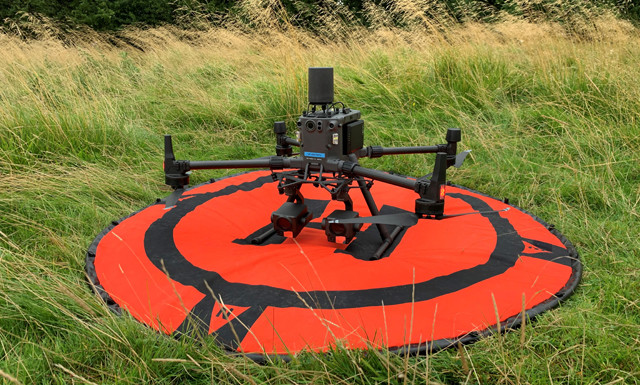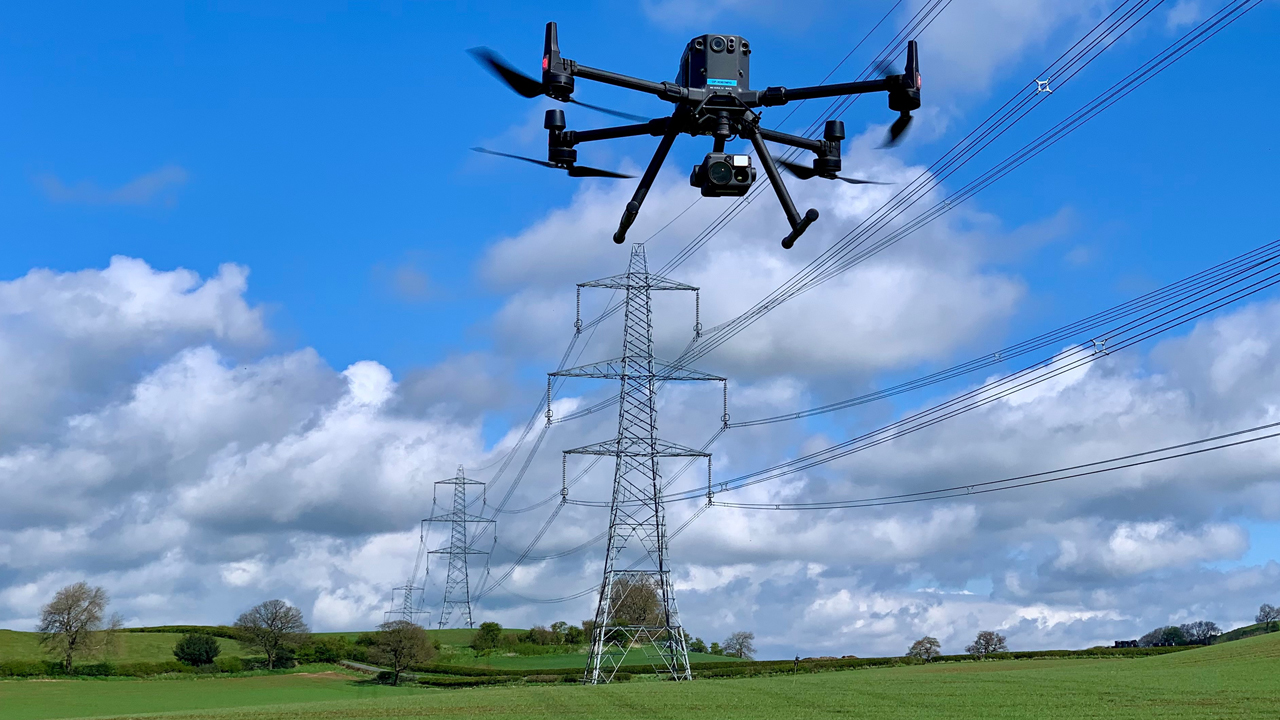

National Grid’s drones: what are they used for?
You might be aware that we use helicopters to carry out inspection work on our overhead power lines network across England and Wales, but did you know we also have a fleet of drones and a dedicated team to operate them?
What do we use our drones for?
Drones – also known as unmanned aerial systems or vehicles (UAS / UAVs) – allow us to look at parts of our network that are more difficult or costly to reach.
They make it much easier for us to inspect the overhead wires and pylons known as the national grid, which transmit electricity from power stations across the country.
We also use drones in substations to gain a bird’s-eye view of high-voltage components that would otherwise require costly power outages, scaffolding or cherry pickers to view.
Why do we need drones to perform inspections?
In the past, the kind of inspections that are now performed by drones were undertaken either by engineers climbing up pylons or using helicopters.

However, there are a number of instances where using a helicopter just isn’t feasible. They can’t get too close to built-up urban areas and in rural areas they can be disturbing to any livestock that’s in the vicinity. These no-go areas currently make up around 15-20% of our network.
Using drones removes the costs and hazards involved with accessing the pylons, as our engineers can stay safely on the ground and the electricity remains switched on.
Drones have already proven to save us both time and money, so introducing them has made a huge difference in how we can plan our maintenance work.
There are still times when the non-drone methods are necessary though. For example, the helicopters can cover greater distances and they don’t require access to the land surrounding our powerlines.
In the event that we can’t access something using a drone or helicopter, it will require a manual ‘climbing assessment’ and rely on our engineers to take photos of the assets.
What kind of drones do we use?
We have a variety of different drones that we use day to day for different purposes:
- 7x M350 / M300 RTK drones made by DJI, the leading manufacturer of drones. These enterprise specification aircraft have a wealth of safety features, including collision avoidance radar. They are industrial grade, robust and can be flown in adverse weather conditions, and fly for up to 50 minutes per flight.
- 2x DJI Mini 3 Pro drones, which at a mere 250g are low-risk, lightweight aircraft that can be flown closer to uninvolved people than a regular-sized drone.
- 1x DJI Mavic2 Enterprise Advanced drone, which is an enterprise version of the popular Mavic consumer drones. This is smaller, making it good for indoor use such as in substations, with an additional floodlight module and thermal imaging capability.
We’re also evaluating confined-space drone technology to enable safer indoor inspections including power tunnel surveys and several innovation project drones.
How do the drones work?
Our drones can be equipped with various payloads for different uses, including:
- High-zoom and thermal image sensors that get the best possible view by capturing still photographs, video and infrared data from a variety of different angles. This helps us to assess faults – such as damaged conductors, wear and corrosion on steelwork and fittings – or identify high resistance ‘hotspots’ on high-voltage assets.
- High resolution photogrammetry and Light Detection and Ranging (LiDAR) payloads, which enable the creation of 3D models, known as digital twins. These are particularly useful to facilitate the planning and implementation of projects such as The Great Grid Upgrade.
Who gets to operate the drones?
We have a team of 16 people who are currently trained to operate the drones for inspections and maintenance on a part-time basis.

Associate Condition Monitoring Engineer (UAS Lead) Matti Ward originally joined National Grid as an overhead line apprentice in 1996 and worked in the helicopter unit for 14 years, operating the onboard camera systems. During this time, he recognised the need for an alternative in those instances where using a helicopter just wasn’t possible.
An early attempt saw him using smaller aerobatic model helicopters with cameras strapped onto them, but this wasn’t an ideal solution. Ten years later multi-rotor drones with advanced flight control systems made their first appearance in the mainstream, making them a viable alternative to the helicopters.
Matti introduced the benefits of using drones to carry out condition assessment in 2017 and the team has grown ever since. The aim now is to have a full-time UAS team, with pilots operating across the network. Having developed techniques with an ever-evolving stream of new technology the expansion of work is massive, requiring highly skilled pilots to meet these demands.
The future of our drone fleet: AI technology and ‘beyond line of sight’ operations
We’re constantly looking at new technologies to help us keep our network operating safely and efficiently. Drones that use artificial intelligence (AI) offer us many options that could make our condition assessment operations even more efficient.
We’re working closely with the Civil Aviation Authority – the UK’s aviation regulator – to expand operations beyond visual line of sight (known as BVLOS).
As technology advances and we develop our skills to prove we can maintain flight safety, we’ll be granted permission to fly longer distances than the current regulations, which limit drone flights to 500 metres from the pilot, maintaining visual line of sight.
To date, we have already completed successful flights conducting inspections out to 3km along a powerline at a test location – the first of such flights in the UK.
Read more about the pylons and cables that our drones monitor


